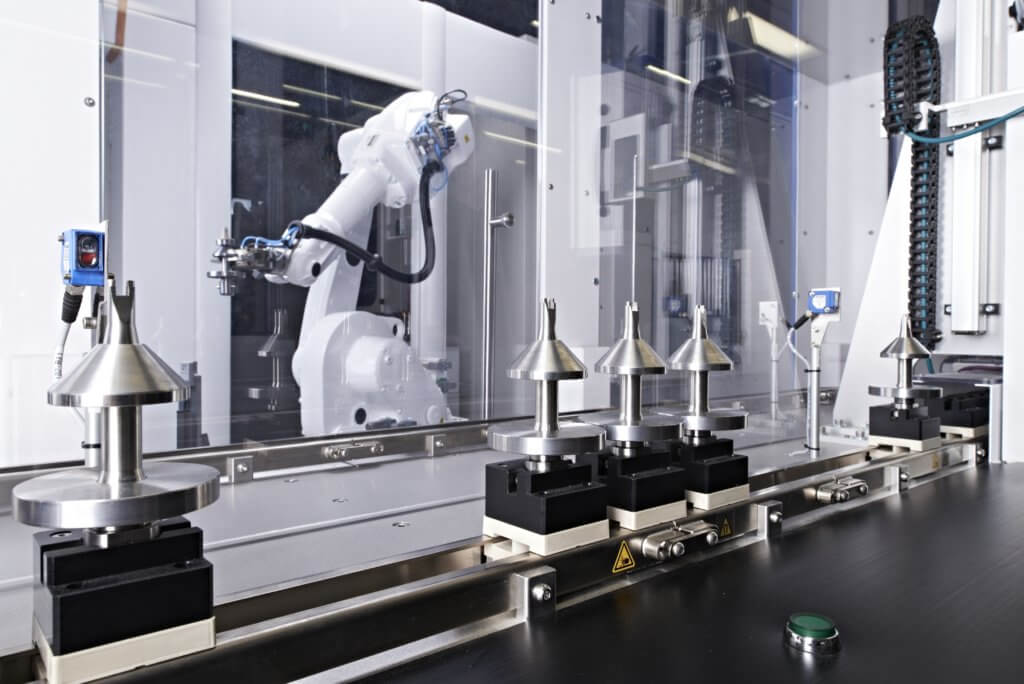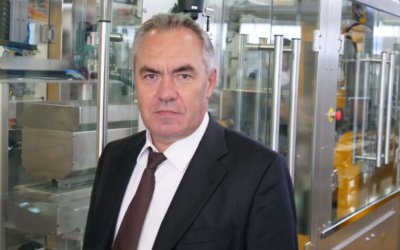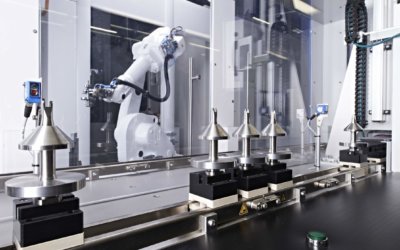Medical Area at the METAV 2018: A healthy form of collaboration for curative technology
The requirements applying to production systems for medical technology are enormously stringent: the certified lines have to operate faultlessly, meet strict hygiene regulations, and document every important step in the production process.

Unsurprisingly, innovative firms opt for intercompany teamwork here: the Medical Area of the METAV 2018 will open new interesting chapters of collaboration here in 2018 – in Düsseldorf, the IMSTec company from Rhineland-Palatinate will be showcasing a new production line that it has developed together with the machine tool manufacturer Schütte from Cologne, Germany.
“We develop end-to-end solutions for medical technology,” explains Edgar Mähringer-Kunz, Managing Director of IMSTec GmbH, Klein-Winternheim (near Mainz, Germany). “The customers come to us with a job profile: we transfer this to a specification, and analyse it for weaknesses and risks.” This is followed by line manufacture, commissioning and support within the framework of maintenance agreements.
Three organisational approaches
Collaboration is usually arranged in three different ways: IMSTec, for example, has developed and built a fully automatic line including all production processes, on which a customer is manufacturing implants that are fitted directly in the eye, and supply it with medication. The technical term used for this is “complete process development outsourcing”. To quote Edgar Mähringer-Kunz: “This was an ideal case, where we developed the processes in parallel to the product, and at the same time built the complete line.” Other customers have developed a production process that’s already been clinically approved, which IMSTec is then progressing from laboratory status to an industrial process. The third variant involves optimising, expanding and automating an already-existing production operation.
All three variants are characterised by a common denominator: for example, manufacturers of lines for medical technology have to comply not least with the stipulations laid down in DIN EN ISO 13485 (a standard covering a comprehensive management system for the design and manufacture of medical products), stringent statutory specifications like those of the USA’s FDA and the GMP rules (Good Manufacturing Practice). In addition, they have to pass various audits by customers. “So the quality and documentation system is already very unusual,” emphasises IMSTec’s Managing Director. “What’s more, you have to remember that this sector, like the aviation industry, cannot permit itself any mistakes whatsoever. For example, we automated a line for packing orthopaedic components, because within two years a part had been mixed up one single time during manual packing. This is why systems for dependable monitoring and tracking of process conditions, known as traceability, play an extremely important role.
New EU stipulations for medical products already met
The European Union has taken on board these stringent requirements with the new legal framework for medical products in force since 2017 (Medical Device Regulation – MDR), which obligates manufacturers of medical products to modify their processes appropriately and provide their products with UDI (Unique Device Identification) by May 2020 at the latest. “All our lines already possess the appropriate systems for individual-part tracking,” says Edgar Mähringer-Kunz. “We can label, unambiguously identify and trace each individual part. It’s also possible to acquire all parameters of a product life-cycle – so for years now we’ve already been implementing parts of Industry 4.0.” This means that on these lines products can be dependably manufactured in ultra-small series or even Batch Size One. The highlights here include the world’s first fully automated lines for producing eye implants, for example.
When it comes to automation, the company has recently begun to collaborate with the machine tool manufacturer Alfred H. Schütte GmbH & Co. KG from Cologne in developing automated production lines, which can be used to completely machine cast knee implants, for example. To quote Edgar Mähringer-Kunz: “We’re already engaged in contractual negotiations with the first customers.” So far, he continues, the solution concerned possesses a unique selling point in that knee implants, for example, can be manufactured significantly more efficiently and productively – and this “with an attractive return on investment”.
Presentation in the Medical Area
IMSTec will be showcasing this new shared solution at the METAV 2018, where the company has been an exhibitor since the introduction of the Medical Area in 2016. “For us, the Medical Area is an important element of our international marketing activities,” is how Edgar Mähringer-Kunz explains their renewed participation at Düsseldorf. “What’s more, our line is not limited solely to medical technology, since it’s also suitable for automatic grinding and polishing of components from other sectors. Which is why I see the METAV 2018 as a good opportunity for diversification.”
Picture Gallery
Downloads
Pictures
Documents



